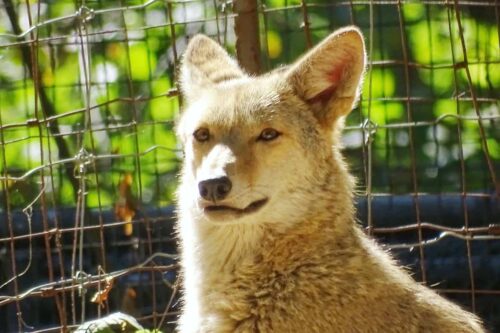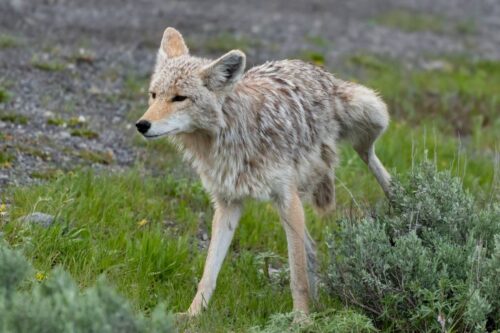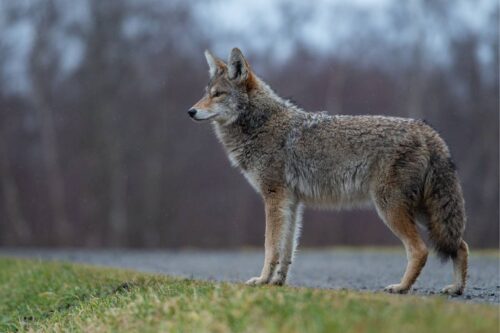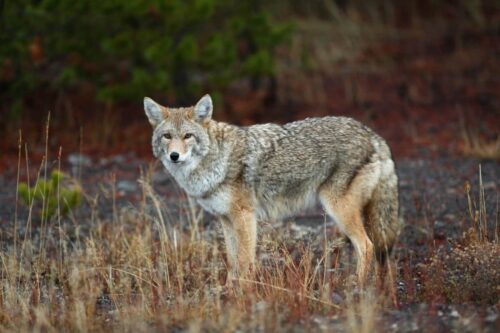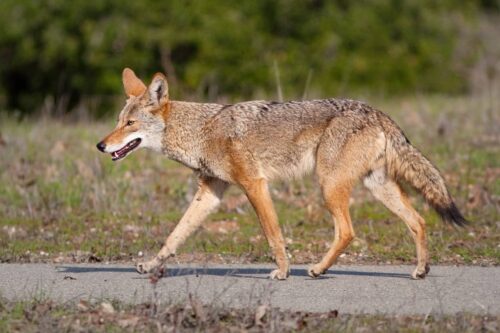Coyote Teeth, Jaws, And Bite Force: Anatomy Revealed
Coyotes are wild dogs belonging to the canine family and have a close resemblance to animals like foxes, wolves, jackals, and other dogs. These are wild animals and come with innate feral impulses. One of the things which makes them extraordinarily dangerous is the coyote teeth and the overall coyote bite force. That’s why it is always recommended by experts that human beings should never go near wild animals like coyotes.
Moreover, they should also keep their pets and defenseless children inside if they think there might be any coyotes outside. Coyotes actually come with carnivorous teeth same like foxes and wolves. These are powerful and strong enough that they can easily crush the bones. In this article, we are going to explain in detail the overall structure of the coyote teeth and how dangerous their bite force could be.

Contents
- What type of teeth do coyotes have?
- Do coyotes have sharp teeth?
- How many teeth do coyotes have?
- How does coyote utilize their teeth?
- How strong is the coyote bite force?
- How strong is the coyote’s jaw?
- How much do coyote bites hurt?
- Can coyote bite go through bone?
- How can you tell the age of coyotes with the help of their teeth?
- Coyote teeth vs dog teeth
- Coyote skull vs dog skull
- Frequently asked questions
- Conclusion
What type of teeth do coyotes have?
Coyote has almost the same dental structure as we can see in other wild or domestic dogs. The coyote teeth structure consists of molars, premolars, incisors, and canines. There are four canine teeth at both the upper and lower jaws of the coyote which help grab and catch the prey. If you have to crush or tear apart a hard or big chunk of animal meat then you must apply molars or premolars teeth. These are also called cheek teeth. All the other canine family members also have these kind of teeth but one thing which distinguish the teeth of coyote from other members is their small, pointed, and narrow snout along with jaws which makes their bite ferocious.
Also, read how coyotes hunt in this article.
Do coyotes have sharp teeth?
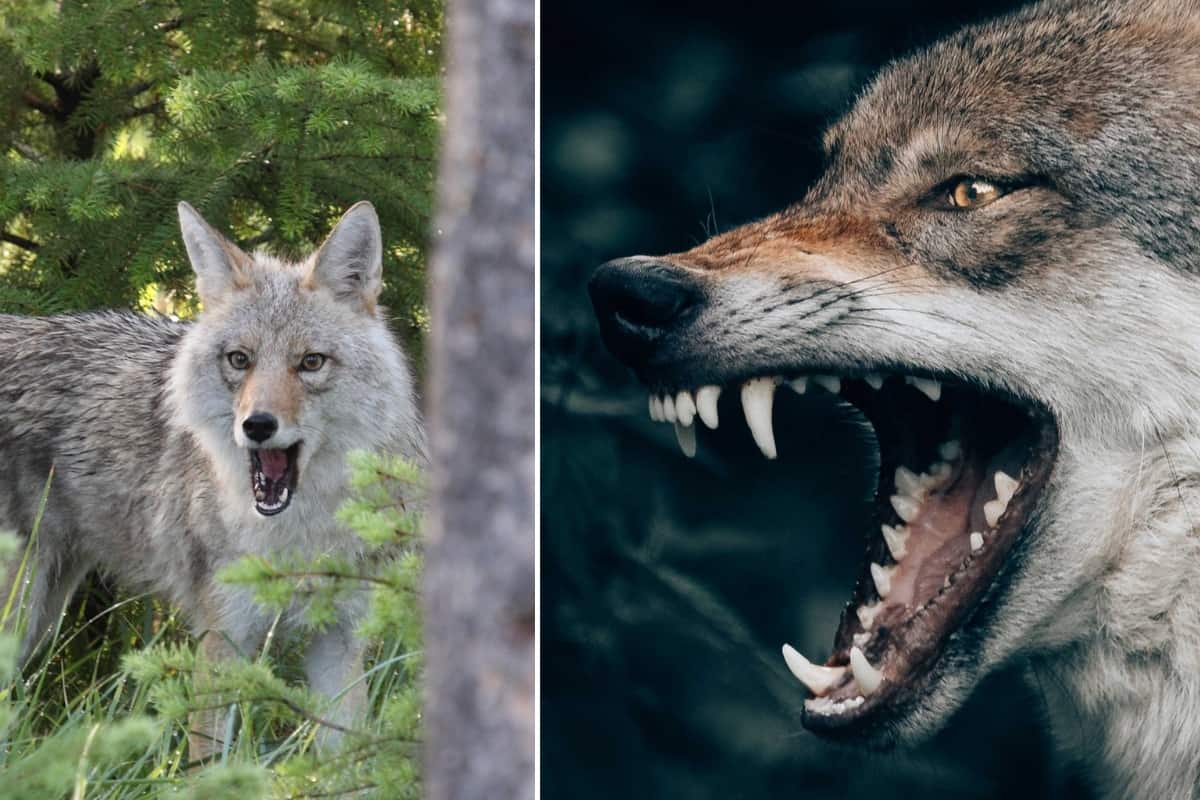
All the Canidae family members are very well-known for their sharp teeth. Coyotes being members of the canine family have very sharp and prominent teeth but these teeth are not prominent enough that you can compare them with the sharpness of a cat’s teeth.
Coyote teeth are sharp enough that they can easily grab, stab, and tear apart their prey. The teeth have been designed in such a way that they can have a very tight grip on their prey. The molars and premolars of the coyote are like blades that can easily crush meat as well as bones.
How many teeth do coyotes have?
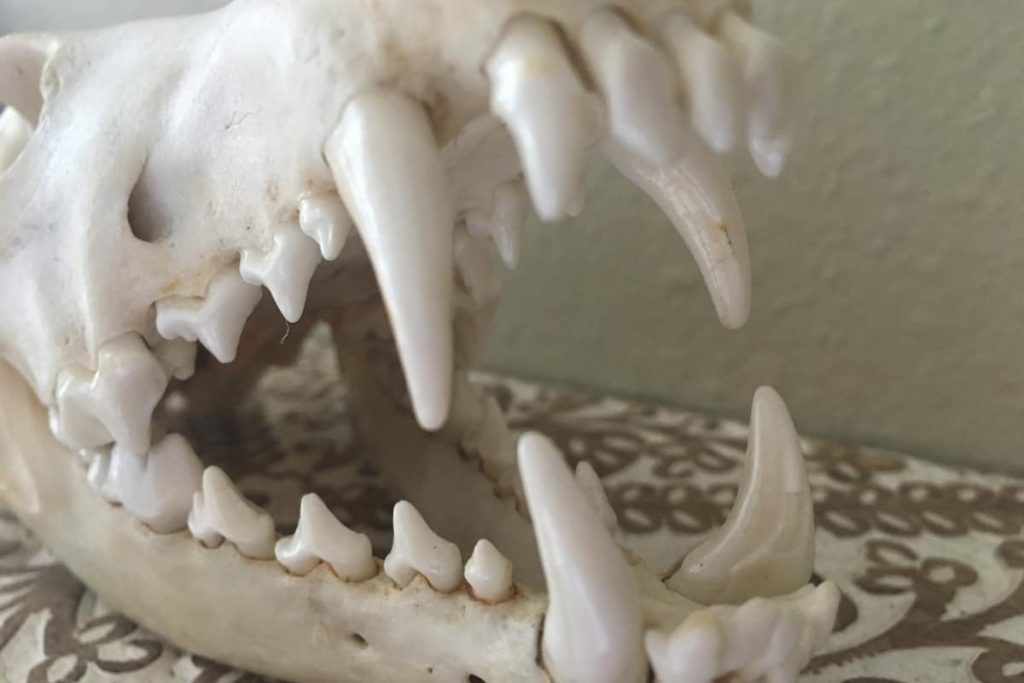
Coyotes possess a total of 42 teeth within their canine dentition. This comprises one canine, three incisors, four premolars, and 2/3 molars in each quadrant. The canines of the coyote are broad, circular, pointed, and capable of crushing bone material. The length of the canine comes in the range between 31 to 38 mm and the width of almost 16 mm. Coyote has very long jaw and the teeth length of the jaw is almost 4 inches while the overall length of the jaw is almost 5.5 inches.
When it comes to palate length, it has good palate length as compared to animals like wolves and domestic dogs. Overall skull of the coyote is slightly long and slated. That’s why it has very large canine teeth and a sloping head.
How does coyote utilize their teeth?
Being omnivorous, coyote utilizes their teeth for various purposes. They like to eat in different kinds of styles. The front incisors are sharp-edged and mainly helped in cutting and biting the food. After front incisors, canine teeth come and they help in grabbing and tearing apart the flesh of prey. Two types of coyote canine teeth perform all of these activities. After grabbing, they apply their cheek teeth for chewing, crushing, and grinding.
With the help of their narrow snouts, they can easily sneak into tight spaces. You can also utilize canines for various other reasons like scrubbing the coat of bugs, tearing apart smaller prey, and also scooping up their young bugs. The sharp canine teeth are highly helpful in crushing and grinding the carrion and mammals’ meat. They not only eat meat but also other fruits, vegetables, etc. They utilize their sharp molars for the crushing of hard foods like insects, nuts, and plant-type materials.
How strong is the coyote bite force?
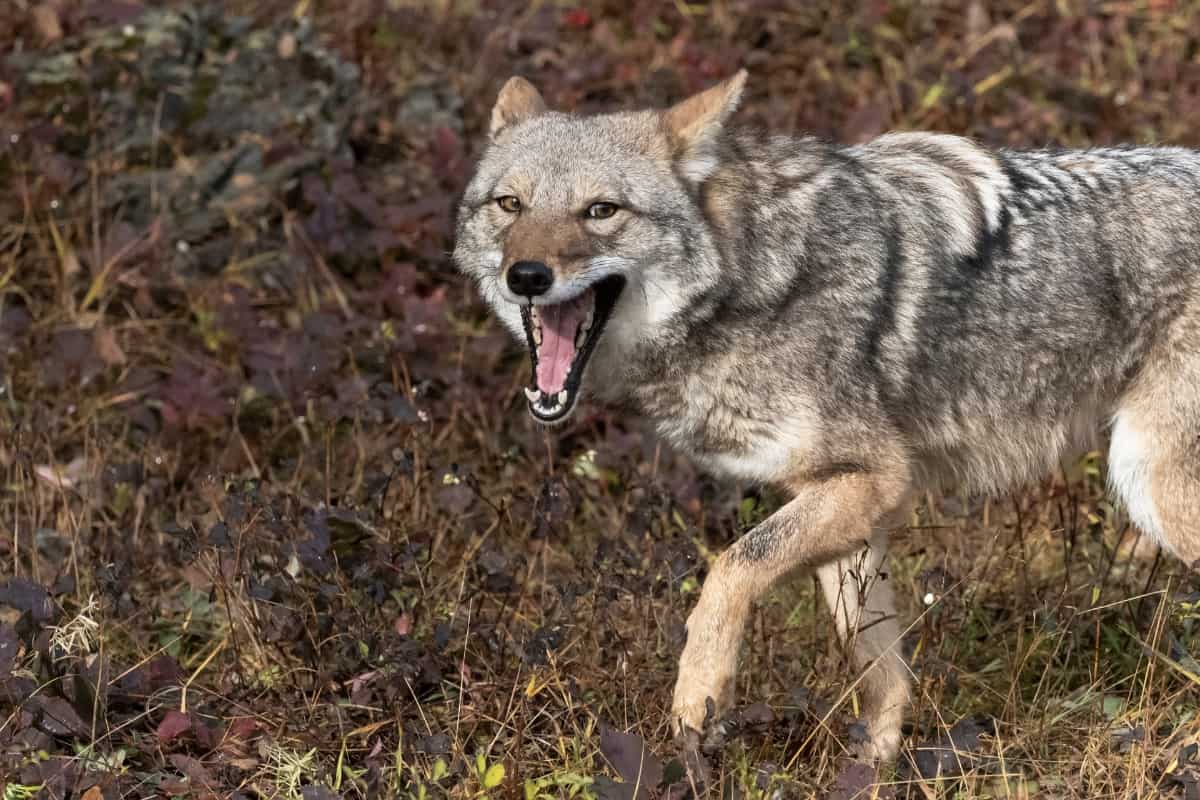
Coyote has very sharp and strong teeth. They can generate the bite force PSI of 88 levels. The jaws at the lower side of the mouth give the final blow and the strongest punch. The strong jaws and good bite force are highly helpful in taking down even large mammals.
How strong is the coyote’s jaw?
Coyote has a very strong jaw and it can easily grab big and dangerous predators. Coyote jaw bone might not have as strong bite force as a wolf (around 400 PSI) but it is still strong enough it could easily handle moderate size prey. The jaw is 5.5 inches large and 4 inches long. They exert maximum power with the help of their lower jaw as it is strong than the upper jaw.
How much do coyote bites hurt?
A coyote has a strong jaw and its bite could hurt more than the bite of a determined house cat. But it hurts very much if they bite you multiple times. However, if they bite on your major blood vessel then the blood could erupt from it and it could be fatal for you. Thus, we can say that the coyote can give you a very deadly and excruciating bite.
Can coyote bite go through bone?
Yes, the coyote bite can go through your bone. They have carnassial teeth along with molars and premolars. These teeth could exert enough force that the teeth could easily crush your bones. When they bite, first of all, they go through small and soft tissues and in the end tear apart or crush the bones.
How can you tell the age of coyotes with the help of their teeth?
The structure of the coyote teeth is helpful in the identification of their exact age. The cementum layer on the teeth is the first indicator of their age. It is actually a cover on their entire teeth structure which makes it more effective and strong. Coyote gets a new cementum layer every year. It means the age of the coyote is equal to the number of layers on their teeth.
The teeth of the coyote also become long and big as the coyote grows older. Coyote also exhibits diphyodont behavior. First of all, they lose their deciduous teeth and then new or permanent teeth come out. The deciduous teeth usually come out after two weeks of the birth of the newborn coyote baby. These teeth usually fall out when they become at least 6 months old.
Coyote teeth vs dog teeth
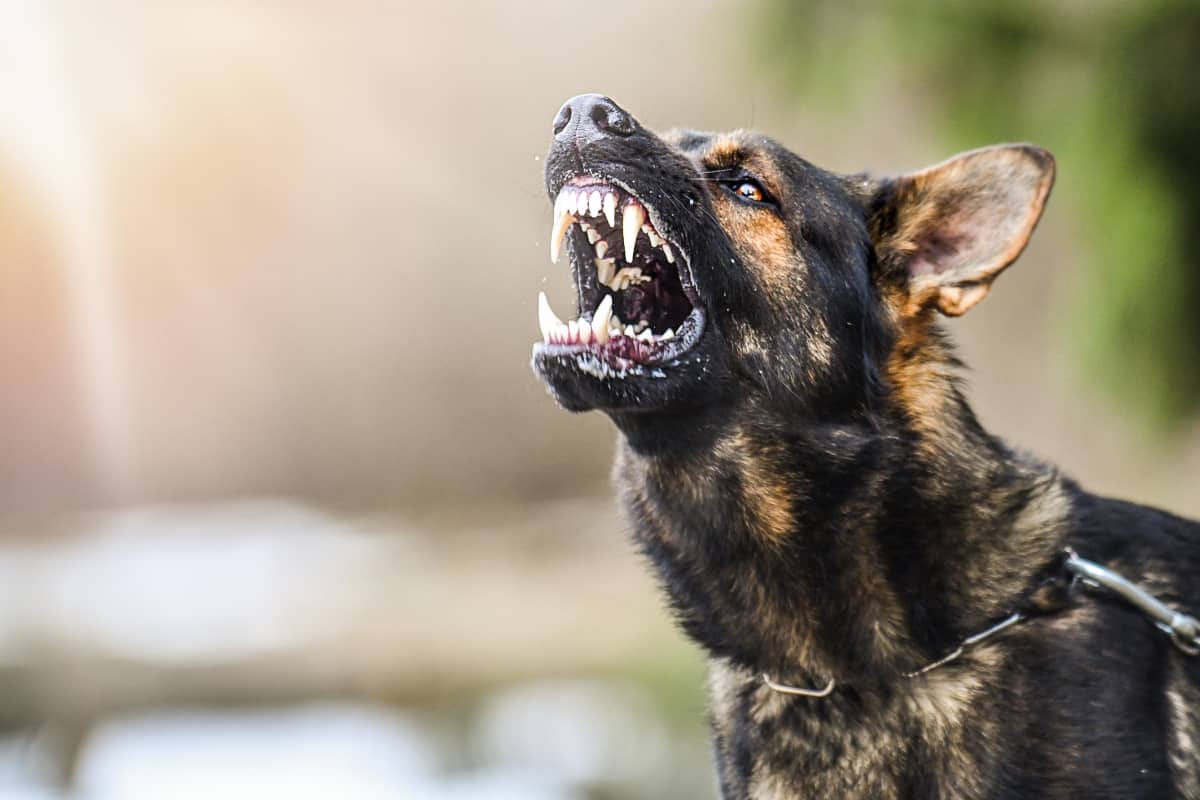
When it comes to size, the coyote has more sharp and long teeth as compared to dogs. Dogs’ canines are also less pointed as compared to coyotes. Coyote teeth also have a more complex cusp pattern. However, the dogs have the upper hand when it comes to the bite force. The bite force of the dogs lies between 200 to 400 PSI while coyotes can only exert 88 PSI bite force. Overall, coyote teeth are more durable and they show more resistance to wear and tear as compared to the durability of the dogs.
Coyote skull vs dog skull
According to a study by the University of California, the coyote skull has very thin and delicate bones as compared to dogs. Moreover, the crests on the skull are also quite sharper as compared to the skull of the dogs. At the top of the coyote skull, you can witness a convex curve from the rear side of the skull to the middle nasal bones. On the other hand, the skull of the dog has a pronounced bulge at the optical orbits where you can find the sinuses.
Frequently asked questions
Conclusion
Coyotes are very much known for their teeth but it is not due to their bite force but the overall strength of their jaw. Coyote has moderate bite force but good techniques to handle their prey. In this article, we have explained in detail the overall coyote teeth, jaw, and skull structure. We have also compared coyote teeth and skulls with other animals. Overall, it is a very comprehensive article on coyote teeth and their bite force.

Izzy is an experienced ranch worker who has a passion for exploring nature and getting up close to wildlife. With her connections to various animal organizations, Izzy is well-versed in animal care and rehabilitation.



